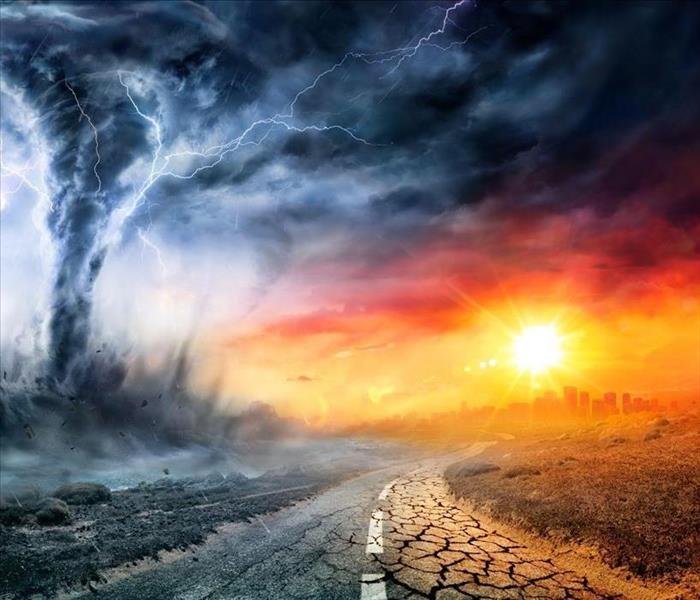Archived Water Damage Blog Posts
Top Tips to Prevent Water Damage During Winter | SERVPRO of Cedar City/Fillmore
1/15/2025 (Permalink)
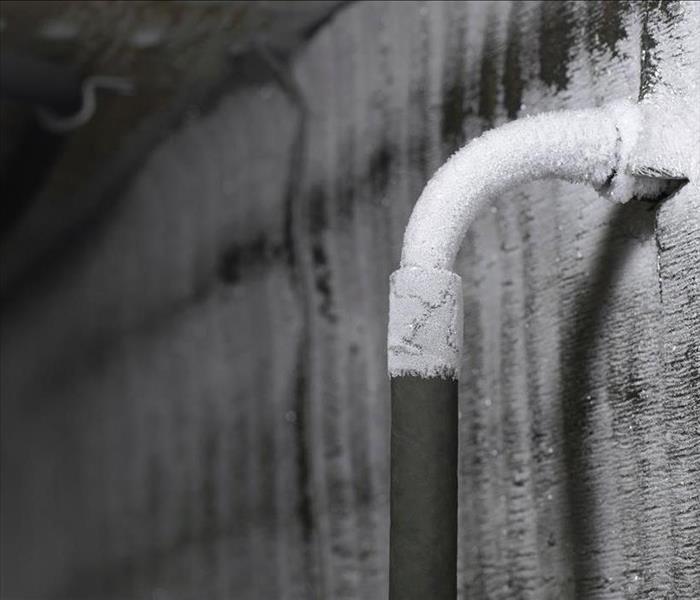 Address water damage promptly. Contact SERVPRO of Cedar City/Fillmore anytime, day or night!
Address water damage promptly. Contact SERVPRO of Cedar City/Fillmore anytime, day or night!
Winter in Utah can bring about a host of challenges, including water damage caused by freezing temperatures and snow. Whether you’re a homeowner or a business owner, it’s essential to take steps to prevent water damage during the winter months.
Here are some tips from our SERVPRO® team to help you avoid costly water damage repairs:
Protect Your Pipes
One of the most common causes of water damage during the winter is frozen pipes. When water freezes, it expands, which can cause pipes to crack or burst. To prevent frozen pipes, be sure to insulate them. Use foam insulation sleeves to cover your pipes and keep them warm.
You should also keep your home warm, even if you are going on vacation or spend a lot of time away from your house. When temperatures drop below freezing, turn on your faucets and let them drip slowly. This will help keep the water moving and prevent pipes from freezing.
Keep Your Gutters Clean
During the winter months, gutters can become clogged with snow, ice and debris. When gutters are clogged, water can’t flow properly, which can cause it to back up and seep into your home or business.
To keep this from happening, be sure to clean your gutters regularly. Remove any leaves, branches or debris that may be clogging your gutters so you can help encourage any precipitation to move down and away from your home. You should also install gutter guards. Gutter guards can help prevent debris from getting into your gutters in the first place.
Be Prepared for Winter Storms
Winter storms can bring about heavy snowfall, ice and freezing temperatures, all of which can cause water damage. To be prepared for winter storms, pack an emergency kit that will help keep your family safe. Your emergency kit should include items like blankets, flashlights, batteries and non-perishable food.
If you have the time, trim your trees so the heavy snow and ice can’t build up on the limbs. Snow can easily snap branches that can land on your home. You should also prioritize inspecting your roof. Make sure your roof is in good condition and can withstand heavy snow and ice.
However, storms are unpredictable. If you do experience water damage, it's essential to act quickly. Contact SERVPRO of Cedar City/Fillmore to help you clean up and repair the damage.
Water damage should be dealt with quickly. Call SERVPRO of Cedar City/Fillmore day or night.
Impending Flood? Here’s What to Do | SERVPRO of Cedar City/Fillmore
9/15/2024 (Permalink)
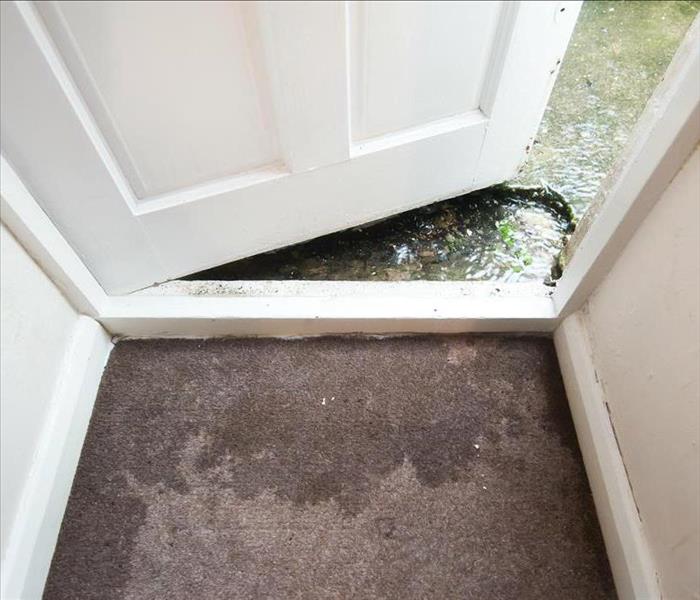 Facing flood-related issues? Get in touch with SERVPRO of Cedar City/Fillmore immediately. We are here to restore!
Facing flood-related issues? Get in touch with SERVPRO of Cedar City/Fillmore immediately. We are here to restore!
Floods can happen in many different ways. Manmade accidents, home disasters and Mother Nature can cause serious issues in a really short amount of time. If you aren’t prepared for how to act, it can lead to further issues and can even impact your safety.
Use these tips from our SERVPRO® team to help prepare your home and your family from a serious flood situation.
Ensuring Your Family’s Safety
To prepare for the worst-case scenario, keep an eye on the weather forecast and stay alert for any alerts, warnings or potential weather changes. You can take the necessary precautions before the storm hits, even when flash flood warnings are issued. Keep away from creeks, drainage areas and any roads that are covered with water, as moving water can knock you off your feet.
If your home is within a flood zone, turn off electricity on the lowest level and move your valuables to higher ground. Anchor outdoor furniture or anything that might be swept away by the water. Seek higher ground with your emergency kit and family to wait out the storm.
What to Do After the Flood
When the storm has passed and the water has stopped flowing, exercise caution while moving around your home. Damage might have occurred below the water level, and hazards like loose nails and wet floors might be present. If you must walk through the water, wear sturdy boots and avoid touching the water, as floodwater can contain hazardous debris, chemicals
and other dangerous materials.
Your next step should be to contact SERVPRO of Cedar City/Fillmore. We will assess the damage and ask you to take photos of everything you see, which will assist us in formulating a restoration plan for you and will make your insurance claim process much smoother.
How SERVPRO Flood Restoration Works
We understand how fast water can spread to different areas of your home, and we work quickly to mitigate the damage. Our team uses industry-leading equipment to remove excess water and dry your home, while other team members remove fragile possessions and soft materials such as chairs and couches. We aim to restore rather than replace as much as possible, so we dry out everything we can.
Once the water is gone, we will clean and disinfect the area to prevent mold growth and repair any damaged floors, walls and carpets. When we are done, your home will be restored to its preloss condition. We are always here to help, no matter your situation.
Dealing with flood damage? Call SERVPRO of Cedar City/Fillmore right away.
Preserving Your Cabin: The Importance of Turning Off Water When You're Away
7/24/2023 (Permalink)
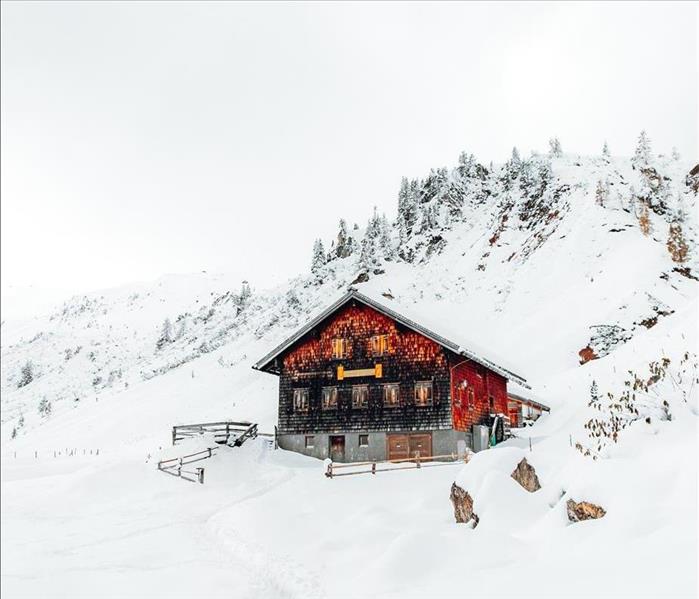 cabin in woods
cabin in woods
Owning a cabin tucked away in a serene, natural setting is a dream come true for many. However, with the beauty of cabin life comes a responsibility to protect your property, especially when it's left unattended for extended periods. One of the most crucial tasks cabin owners must undertake before leaving is turning off the water supply. In this blog, we will explore the significance of this preventive measure and how it can prevent potential disasters such as burst pipes and water damage, ultimately ensuring that your cabin remains a tranquil oasis for years to come.
1. Avoid Burst Pipes and Costly Repairs
One of the main reasons to turn off the water to your cabin is to avoid the nightmare of burst pipes. When a cabin sits unused for an extended period, the water inside the pipes can freeze during colder months, causing them to expand and burst. This can lead to significant water damage, not only to the pipes but also to the surrounding structures and belongings within your cabin. Repairing burst pipes can be a costly and time-consuming process, easily spoiling the joy of owning a cabin.
2. Prevent Mold and Mildew Growth
When water leaks go unnoticed, it creates an environment ripe for mold and mildew growth. Mold can spread rapidly, especially in damp and dark areas such as basements or hidden corners of your cabin. Not only does mold pose health risks to occupants, but it can also cause irreversible damage to the cabin's structure and belongings. By turning off the water, you eliminate the possibility of leaks and reduce the risk of mold infestation.
3. Conserve Water and Energy
Turning off the water supply to your cabin is not only about preventing damage; it's also an eco-conscious decision. By shutting off the water when you're away, you reduce water wastage and contribute to water conservation efforts. Moreover, you save energy by ensuring that your water heater isn't constantly working to maintain the water temperature while the cabin is unoccupied.
4. Avoid Unpleasant Surprises
Nothing ruins a relaxing getaway to your cabin like discovering water damage or a flooded interior upon arrival. Turning off the water before leaving ensures that you won't be greeted by any unpleasant surprises. Instead, you can focus on enjoying your time at the cabin without worrying about potential repairs and costly cleanup.
5. Peace of Mind
Knowing that you've taken the necessary precautions to protect your cabin from water-related disasters provides peace of mind. Whether you're away for a few weeks or several months, you can rest assured that your cabin is safe from water damage. This peace of mind also allows you to fully embrace the joy of cabin ownership, appreciating the beauty of nature and the tranquility it offers.
6. Simple Steps to Turn Off Water
Turning off the water supply to your cabin is a relatively simple process. Start by locating the main shut-off valve, which is typically located near the water meter. Turn the valve clockwise until it is fully closed. Once the water is off, open all faucets and flush toilets to drain any remaining water from the pipes. Additionally, consider draining your water heater to prevent any potential issues while you're away.
A cabin represents more than just a structure; it's a place of solace and cherished memories. To preserve this haven and protect it from water-related disasters, turning off the water before leaving is of utmost importance. By doing so, you prevent burst pipes, water damage, mold growth, and high repair costs. Additionally, you contribute to water conservation efforts and enjoy the peace of mind that comes with knowing your cabin is safe and secure while you're away. Take the simple step of turning off the water, and your cabin will continue to be a cherished retreat for generations to come.
Why You Should Not Use Chemicals To Clean a Clogged Drain
6/17/2022 (Permalink)
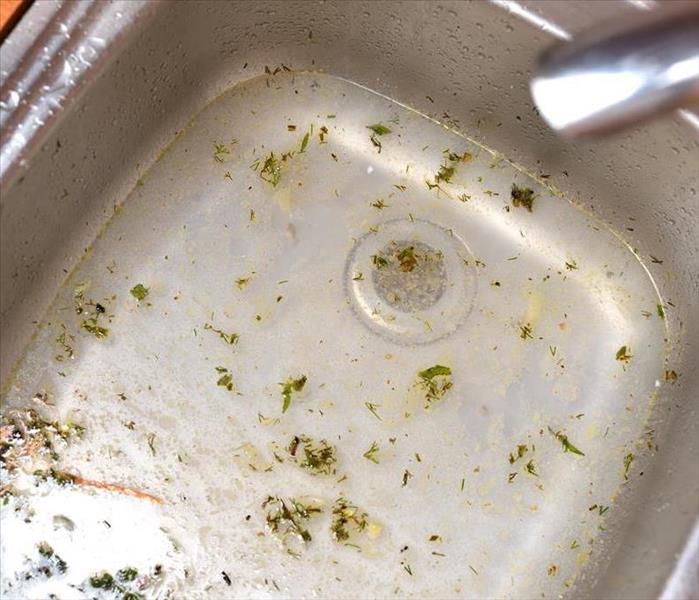 To Clean a Clogged Drain will be safer by following our tips.
To Clean a Clogged Drain will be safer by following our tips.
A clogged drain does not just slow down your plumbing system. It could cause a severe backup that floods your Cedar City, UT, home. While sewage cleaning professionals can help you in this situation, you should also take steps to prevent water damage in your house. You may be tempted to use chemicals to clear your drain. However, they often do more harm than good.
Chemical Drain Cleaner Can Damage Your Pipes
Chemical cleaners either take electrons from the organic substances clogging your drain, or they give electrons to those substances. This process creates heat that breaks up the blockage. The main types of drain cleaners include:
- Oxidizing cleaners
- Acid cleaners
- Caustic cleaners
While these cleaners sound good in theory, they often just push the oil, grease or fat in your drain further down the pipes. This creates a new clog that may be even tougher to clear.
Potential Dangers of Chemical Cleaners
Chemical cleaners are not just ineffective. They are also harmful. Once they are poured down the clogged drain, the chemicals travel through the pipes and settle in rivers and lakes. The chemicals may then poison animals and destroy plants.
These cleaners could also affect you and your loved ones. The chemicals are strong enough to burn through your skin. This could leave you with rashes or other open sores. You may develop throat or eye irritation just from breathing in the toxic fumes.
Drain Cleaning Alternatives
There are two safer options for removing drain clogs. You should first try mechanically clearing the drain with an auger or plunger. A small cup plunger is perfect for sinks. To use it, remove the stopper from the drain and cover the hole with a slightly wet rag. Then fill the sink halfway and place the rubber cup of the plunger over the whole. Apply quick pressures and see if the water starts draining.
If you do need to pour a cleaner down the drain, opt for a more natural solution. You can make an effective homemade de-clogger with just a half cup of vinegar and a half cup of baking soda. Pour the baking soda into the drain first and follow with the vinegar. Use a damp cloth to keep the drain hole closed. After a few minutes, add hot water to flush away the debris. Pour the water using a tea kettle so you do not burn yourself.
Remember that PVC pipes soften when exposed to hot temperatures. If you have these pipes in your home, do not use boiling water when clearing the drain. Instead of making your own cleaner, you could also buy a solution made of eco-friendly enzymes. Enzymes essentially eat the organic materials that often cause clogs. However, enzyme cleaners may take up to 24 hours to work.
If you notice a clogged drain in your home, you should only use chemical cleaners as a last resort. Instead, try clearing the blockage with an auger or plunger. If that does not work, try pouring a non-toxic enzyme cleaner down your drain. This should break up the clog without introducing toxic chemicals into the environment.
Faster to your Cedar City Water Disaster
6/10/2022 (Permalink)
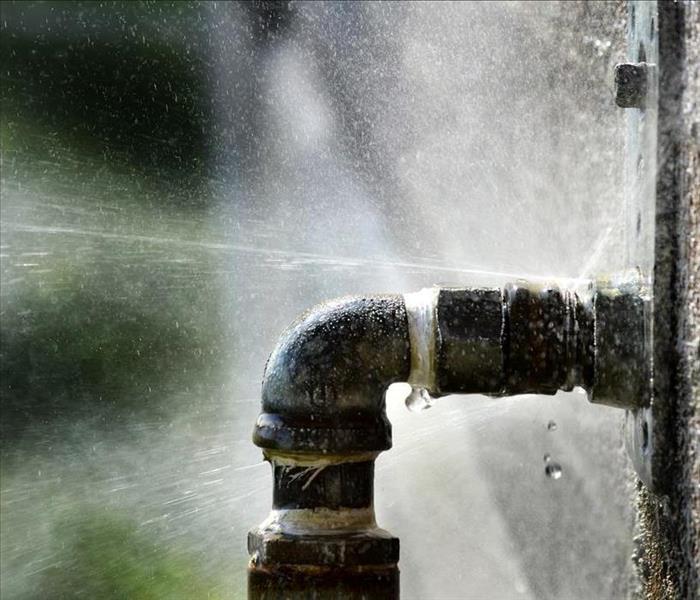 Pipes can break and flood a residential home.
Pipes can break and flood a residential home.
SERVPRO of Cedar City/Fillmore provides 24-hour fire and water damage restoration service in Iron County
Flooding and water emergencies don’t wait for regular business hours and neither do we. We provide emergency cleaning and restoration services 24 hours a day, 7 days a week—including all holidays.
Faster To Any Size Disaster
Flooding and water damage are very invasive. Water quickly spreads throughout your home and gets absorbed into floors, walls, furniture, and more. SERVPRO of Cedar City/Fillmore arrives quickly and starts the water extraction process almost immediately. This immediate response helps to minimize the damage and the cleaning and restoration costs.
Need Emergency Service? Call Us 24/7 – (435)251-9241
Water Damage Timeline
Within Minutes
- Water quickly spreads throughout your property, saturating everything in its path.
- Water is absorbed into walls, floors, upholstery, and belongings.
- Furniture finishes may bleed, causing permanent staining on carpets.
- Photographs, books, and other paper goods start to swell and warp.
Hours 1 - 24:
- Drywall begins to swell and break down.
- Metal surfaces begin to tarnish.
- Furniture begins to swell and crack.
- Dyes and inks from cloth and paper goods spread and stain.
- A musty odor appears.
48 Hours to 1 Week:
- Mold and mildew may grow and spread.
- Doors, windows, and studs swell and warp.
- Metal begins to rust and corrode.
- Furniture warps and shows signs of mold.
- Paint begins to blister.
- Wood flooring swells and warps.
- Serious biohazard contamination is possible.
More Than 1 Week:
- Restoration time and cost increase dramatically; replacing contaminated materials and structural rebuilding may be extensive.
- Structural safety, mold growth, and biohazard contaminants pose serious risks to occupants.
Emergency Water Damage Tips
6/10/2022 (Permalink)
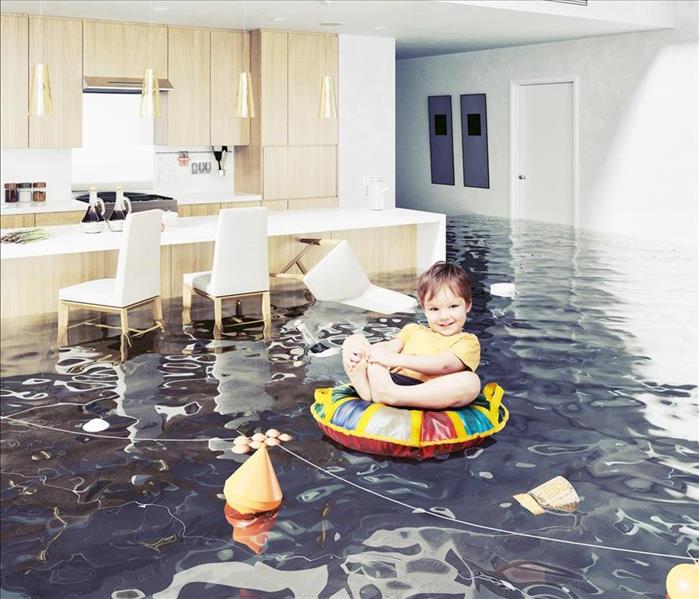 A large flood can be difficult to clean without expert help.
A large flood can be difficult to clean without expert help.
Emergency tips for when your house has been flooded by water from a clean source.
When you find that your house has been flooded it is common to feel alarmed, frustrated, devastated, or worried at some level. Not knowing what has been damaged or how much the repairs will cost can be quite stressful. However, there are things that you can do to minimize the damage to your home and to ensure the safety of you and your family. Here are a few quick tips that can be quite helpful when your home has been flooded by water from a clean source.
- Shut off the source of water if possible or contact a qualified party to stop the water source.
- Turn off circuit breakers for wet areas of the building, when access to the power distribution panel is safe from electrical shock.
- Remove as much excess water as possible by mopping and blotting.
- Wipe excess water from wood furniture after removing lamps and tabletop items.
- Remove and prop up wet upholstery cushions for even drying.
- Place aluminum foil or wood blocks between furniture legs and wet carpeting.
- Remove to a safe, dry place any paintings, art objects, computers, documents, and other materials that are valuable or sensitive to moisture.
- Uses wooden clothespins to keep furniture skirting off damp floors.
- Hang furs and leather goods to dry separately at room temperature.
- Don’t enter rooms with standing water where electrical shock hazards may exist.
- Don’t enter affected areas if electrical outlets, switches, circuit breakers, or electrical equipment are exposed to water. Always avoid electrical shock hazards.
- Don’t leave books, newspapers, magazines, or other colored items on wet carpets or floors to cause staining.
- Don’t leave Oriental rugs or other colored rugs on wet wall-to-wall carpets to cause staining.
- Don’t use your household vacuum cleaner to remove water, possibly causing electrical shock or damage to the vacuum cleaner.
- Don’t use TVs or other appliances while standing on wet carpets or floors, especially on wet concrete floors.
- Don’t turn on the ceiling fixtures if the ceiling is wet or enter rooms where ceilings are sagging from retained water.
These tips will help you avoid some dangerous situations and allow you to save money by decreasing the amount of damage that could happen to your home, of course, the first and best tip is always to give us a call.
Flood Water Cleanup
6/10/2022 (Permalink)
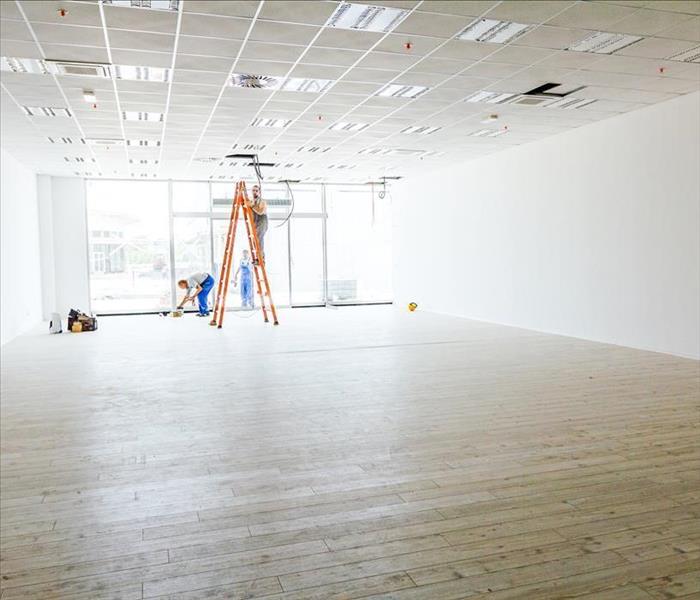 Pipe Break Cleanup in Cedar City
Pipe Break Cleanup in Cedar City
Flooding and water damage events in Cedar City commercial properties are often complex with numerous issues that require a knowledgeable and flexible response. Whether we’re dealing with a relatively small water cleanup scenario or a large-scale event, we work quickly to assess each unique situation and isolate the damaged area. In many instances, normal operations can continue in a temporary space while we restore your facility.
Restoring Commercial Properties
Our professionals are trained to be mindful of legal and environmental concerns and strive to fully restore the damaged area while working within your budgetary constraints. We understand that every hour spent cleaning up is an hour of lost revenue and productivity. So when an emergency situation arises in your business, give us a call and we’ll be there fast with the help you need.
How To Manage Your Home’s Pipes During the Winter
6/10/2022 (Permalink)
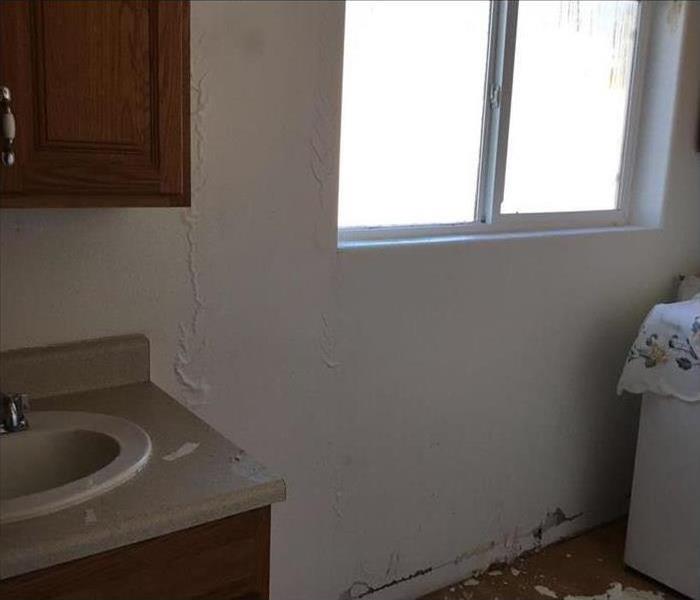 Minimizing water damage in house pipes.
Minimizing water damage in house pipes.
Freezing temperatures are a water pipe’s worst enemy. As a precaution, every homeowner should employ strategies to minimize the risk of bursting pipes during cold winter months. In the event of a broken pipe, you should also know how to efficiently address the ensuing water damage.
Minimize the Risk of Water Damage
Fixing a broken pipe and cleaning up water damage can be tedious projects. To minimize the risk of burst pipes, consider the following tips:
- Direct warm air towards pipes located near external walls
- Open kitchen and bathroom cabinets under sinks to increase air flow
- Ensure the temperature remains above 32? in all parts of your home
- Keep water moving through pipes by allowing one or two faucets to slowly drip
- Seal leaks allowing cold air inside your home
Safety Concerns
Water and electricity are a potentially deadly combination. If a pipe bursts, make sure to turn off the power to any electrical devices or appliances near the affected area to avoid electric shock.
The Cleanup Process
Bursting pipes can release large volumes of water, creating significant destruction. To begin the cleanup process, you should drain any remaining water. You can use a shop vac to expedite the process.
Once you eliminate pooled water, remove soaked carpets, wet drywall and insulation, and any saturated personal belongings. You may be able to salvage some items, but damaged drywall and insulation will need to be replaced.
Before proceeding with repairs, you must ensure that the affected area is free of moisture. Opening windows and using fans and a dehumidifier can help speed the drying process. The affected area should be completely dry within two to three days, but it may take longer, depending on the volume of water released.
Professional Assistance
Bursting pipes can present a significant challenge for any homeowner in Cedar City, Utah. Fortunately, you do not have to tackle the problem alone. A licensed plumber can help you fix the broken pipe, and a professional cleanup and restoration team can assess the damage and help complete repairs. Taking proactive measures to protect your pipes from freezing temperatures is also beneficial and may prevent unintentional damage in the first place.
Tips To Quiet Your Pipes
4/28/2022 (Permalink)
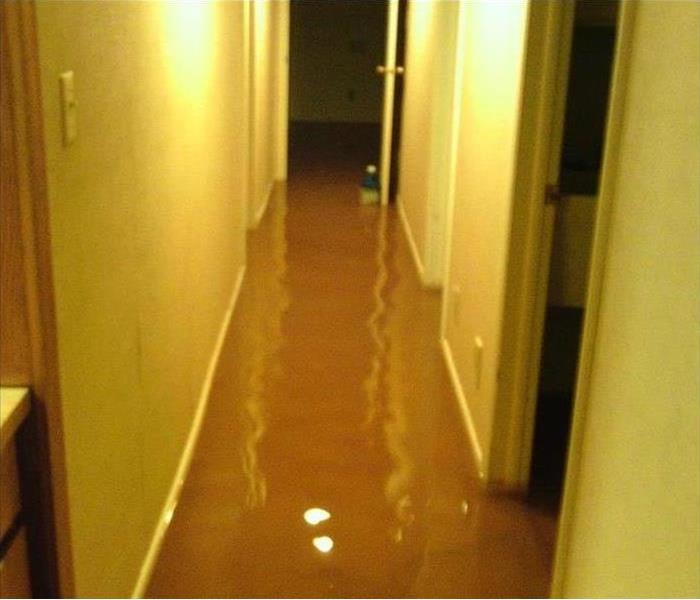 Hallway flooded in Cedar City Commercial building
Hallway flooded in Cedar City Commercial building
You hear whistling and hammering at your home in Cedar City, Utah. You peek in on your family and it is not any of them. Who could it be? Surprisingly, it could be your pipes. Ignoring these sounds could lead to a disastrous pipe break in the future. Read below to learn what these sounds mean and what to do next.
Hammering
- Hammering or banging sounds occur when water slams into the sides of the pipe when the flow is suddenly shut off. Before a pipe break occurs, solve this by taking the following measures:
- Examine your pipes to see if any pipes are banging against something or missing pipe straps. If this is the case, fix the broken pipe by adding replacement pipe straps or inserting padding where the banging occurs.
- Install an air chamber when the pipe does not contain water. The resulting pocket of air softens the blow of the water slamming abruptly, and lessens the hammering noise. Depending on the location and severity of the noise, these chambers can be installed behind faucets or on the main water line to the house.
Whistling
Whistling noises happen when water quickly flows through a small opening, usually related to faucets or toilet tanks. To avoid a potential pipe burst, take the appropriate next steps:
- First, isolate the problem by turning on and closely listening to each faucet and toilet individually until you locate the source.
- For faucets, turn off the water supply and tighten or replace the interior washer and screw. For toilets, repair, adjust or replace the ballcock mechanism inside the tank.
Be vigilant about the sounds your pipes make in Cedar City, Utah. If you do not take action to fix the problem, a pipe break may occur. Once a pipe burst happens in your home, the likelihood of water damage to your home and belongings is substantial. In this event, fix the broken pipe, call your insurance agent and contact a water restoration specialist as soon as possible.
How to Maintain Your Water Heater
4/5/2022 (Permalink)
Water heaters are an essential part of everyday living. While they must function smoothly throughout the year, their maintenance becomes increasingly important around winter.
A properly maintained heater not only provides you with hot water around the clock but also saves energy and money. If ignored, the heater can run up costs, break down, and require new heater installations frequently. Here are a few simple tips that can prolong your water heater’s life and ensure smooth operation.
Lower the Temperature
Lowering the temperature as little as 10 degrees can save you up to 5% in energy costs. If the heater is working to keep the water warm rather than extremely hot, the water reaches that level faster. This lower temperature will also protect the heater from working too hard and increase its longevity.
Drain the Dregs
Sediments collect over time and need to be flushed out. To keep your water heater in pristine condition, drain the heater’s tank a few times a year to remove all the dregs and debris. Fill the tank about a quarter of the way full and close the supply valve. Then attach a hose to the drainpipe for the water to drain. If the water remains cloudy, briefly turn on the supply valve again and let the water drain.
Test the Temperature & Pressure Release Valve
At least once every year, check whether the temperature and pressure release valve are in working order. The valve has to open and release pressure in case the tank overpressurizes; otherwise, it can explode. Release the pressure from the valve two or three times. If the water is leaking, drain the water from the tank, remove the discharge tube, and replace the valve.
Check the Anode Rod
Geysers have an anti-corrosion anode rod installed that attracts impurities in the water and saves the tank from rust or corrosion. But over time, the rod itself can corrode. Every three years, check to see if the rod’s outer magnesium layer is corroded and if more than six inches of core steel wire is exposed. If the rod itself has reduced in thickness to less than half an inch or if there is a whitish calcium coat on the rod, you’ll need to replace the rod.
Maintain Space around the Heater
Make sure that the heater is not tucked away in a corner somewhere. Ensure at least two feet of space around the heater, so it can be serviced and is not at risk of collision.
Get Annual Maintenance Done
The best maintenance is done by an expert. To save yourself the trouble, you can hire a professional for annual maintenance, especially around winter when water heaters are working harder to keep the hot water flowing. If your water heater floods, contact SERVPRO of Cedar City / Fillmore.
No Job Too Large: SERVPRO’s Large Loss Services
4/1/2022 (Permalink)
There are few events in life more devastating to families, businesses, and cities than large-scale natural disasters. Besides the emotional toll involved, the thought of cleaning up the mess and communicating with insurance companies can become paralyzing.
Should you find yourself in this difficult situation, there is no need to despair. SERVPRO’s Disaster Recovery Team specializes in large-scale disaster relief and recovery. Our highly trained disaster teams are stationed all over Utah to respond at a moment’s notice. SERVPRO is organized and focused on efficient organization and clear communication to ensure complete restoration.
Recovery After Fire Disasters
In 2017, California experienced one of the largest wildfires ever witnessed in the history of the state. Between October to December, the fires forced over 230,000 residents to flee their homes, eventually causing 18 billion dollars in overall damages. Our restoration teams mobilized command centers in Northern and Southern California to respond to the aftermath, aiding residential, commercial, and industrial buildings and businesses.
Even if the disaster only burns down one building, a home or business burning down is no less serious for the victims and for us. No matter the size of the blaze, we perform fire recovery and cleanup operations with the same high level of dedication and service.
Cleaning Services After High Winds
Cedar City, Utah, and Fillmore, Utah, don’t see many tornadoes. In fact, there have only been 136 recorded tornadoes in Utah since 1950, the majority of which caused little to no damage. However, Central and Southern Utah are known for their high wind speeds, some of which are more than strong enough to bring down telephone lines and tree branches.
SERVPRO of Cedar City / Fillmore can cover the complete recovery of areas affected by windstorms quickly and easily, even those that have experienced high damage due to large debris, fallen trees, and other such difficulties.
Relief from Flood and Ice Damage
Utah is no stranger to high flooding and mudslides. Equally common and powerful are the blizzards and frigid temperatures that can cause burst pipes and power outages to entire communities. Should you find yourself affected by strong snowstorms or freezing temperatures, our experienced recovery specialists at SERVPRO of Cedar City / Fillmore will respond with friendly service and a helping hand.
In addition to exterior restoration and water cleanup, we will assist you in mold remediation to ensure that your family, customers, and employees experience positive health despite the disaster.
Choose SERVPRO for Comprehensive, Large-Scale Restoration in Cedar City, Utah
Have you experienced a terrible natural disaster in Central or Southern Utah? Are you worried that a large-scale emergency might happen again? Be prepared for any situation, no matter the size, with help from SERVPRO’s Large Loss Division services. Give us a call at (435) 251-9241 the moment the disaster passes. We are ready for anything!
How SERVPRO’s Advanced Restoration Technology Can Save Your Home
3/11/2021 (Permalink)
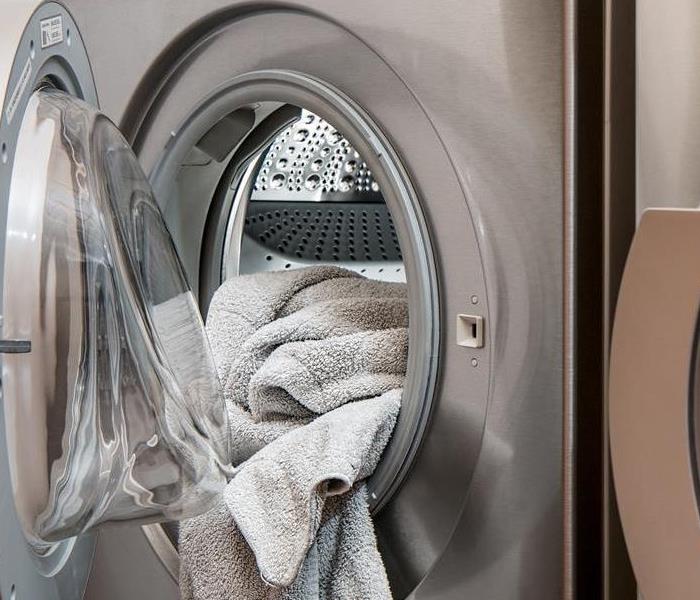 fire house
fire house
At SERVPRO, we use the latest state-of-the-art technology and techniques to ensure we’re providing the best restoration services for your commercial or residential property. We offer professional services for all types of disasters, including water, storm, mold, and fire damage.
If you’re trusting us with cleaning up and restoring your property, you might be wondering what these technologies and techniques are. Here are some of the advanced technologies we use for our restoration and cleanup services:
SERVPRO’s Professional Restoration Services for Water, Fire, Mold, and Storm Damage
At SERVPRO, we have five main techniques and technologies that can restore your home from damage. Our advanced technology helps us restore your home in the quickest, most reliable, and efficient way possible.
Moisture Detection Techniques for Water and Mold Damage
We use a moisture detection technique to detect, monitor, and measure the amount of moisture in a building. Our equipment includes the most recent technology, like infrared cameras, and sensitive moisture detectors and hygrometers.
This state-of-the-art equipment is used to restore properties from water and flooding damages. It can also be used to detect moisture in buildings suffering from mold.
High-Quality Water Extraction Tools for Water and Storm Damages
Another technology we used to restore water-damaged homes is our water extraction equipment. This technology uses up-to-date gas-powered pumps to remove water from buildings, which takes away most of the water in a flooded home.
Drying Equipment for Water and Storm Damages
After your home has suffered water damage, you’ll need special equipment to dry out the building, which is where we come in.
Our advanced drying equipment technology uses high-speed air movers and industrial dehumidifiers to quickly evaporate any moisture left in your home and pull the vapor out of the air. This technology can prevent your home from suffering from any further damages.
Advanced Odor Removal Technology
If your home has suffered damages that have left behind powerful odors, we have just the equipment to deodorize your home. Our odor removal services can be used for water, fire, and mold odor damages.
Our professional restoration services remove and deodorize odors with advanced machines that eliminate airborne contaminants. By using air scrubbers, thermal foggers, and deodorization tools, we offer the most up-to-date techniques to get your home smelling clean and fresh in no time!
Cleaning Techniques and Treatments
After your home has been hit by any disaster, including floods, storms, fire, and mold, consider hiring us for our sanitizing services!
We’ll clean your home with sanitizing agents, germicides, and antimicrobial treatments, which have all been approved by OSHA. This advanced service cleans your home after severe damages and removes any odors and contaminants left by water, mold, or fire.
Contact SERVPRO
Not only do we have the tools and techniques to clean up and restore your home, but we have the professional knowledge to get the job done efficiently and quickly the first time around. Contact us to discuss the type of disaster your home has faced and which restoration services you’ll be needing. We’ll find the right advanced technology and professional restoration services for you in Cedar City and Fillmore today!
When to Use SERVPRO’s Residential Cleaning Services
3/11/2021 (Permalink)
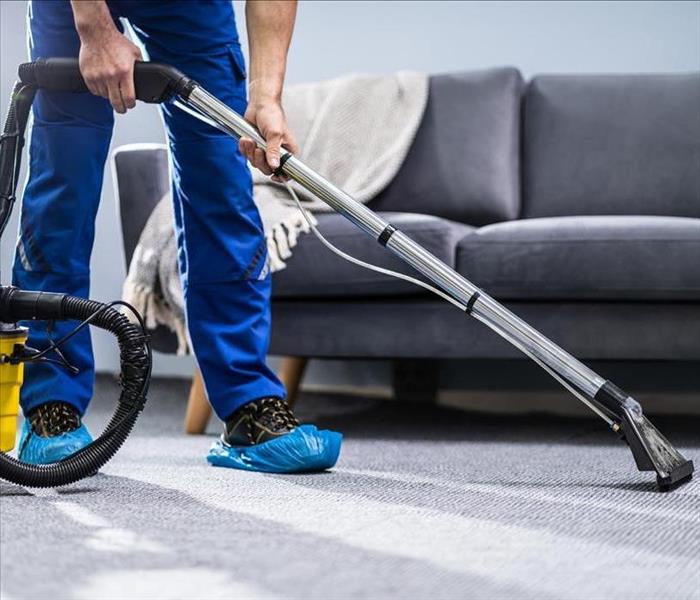 clean
clean
At SERVPRO, we offer a variety of residential cleaning services that can be used for any of your cleaning needs. Whether you’re looking for a deep carpet cleaning or wanting something to clean your ceilings and walls, we have just what you need!
We offer a handful of cleaning services to help you keep your home sparkling clean. While we don’t offer a basic house cleaning service like other cleaning or maid companies, our traditional service offers a much deeper clean. This means you won’t need to constantly clean your home. Learn more about our most popular residential cleaning services for homes in Cedar City and Fillmore.
Carpet and Upholstery Cleaning
Our deep carpet cleaning and upholstery cleaning services are perfect for any unexpected messes like pets having accidents on the carpets or children spilling juice on your white upholstery. Not only can we clean any spills or accidents out from your carpets and upholstery, but we’ll also remove all dust and dirt with these services to leave your home professionally cleaned.
Ceilings, Floors, and Walls
We also offer a deep ceiling, floor, and wall cleaning service. Whether you’re wanting to prepare your walls for a fresh layer of paint or just looking to have your walls and ceilings cleaned, we’re equipped to remove all dirt, dust, pet dander, grease, and smoke remnants.
With our industry-approved cleaning methods and supplies, we’re prepared to deep clean your hardwood or tile flooring. We’ll remove any dirt and grime that has built up over time while restoring your floor to its former glory.
Drapes and Blinds
Another deep residential cleaning service we offer is for your drapes and blinds. While these may not be typical areas you think to clean around your house, drapes and blinds are great at collecting dirt and dust, so they should be cleaned regularly. Hire us to deep clean them next time you’re thinking about spring cleaning. We’ll not only remove the dirt from your drapes and blinds, but we’ll dust them as well!
Other Cleaning Services Offered by SERVPRO
We don’t just offer in-home cleaning services, either. We have several other services for you to choose from depending on what area of your home you need cleaned, whether that be your air ducts, odors, or sewage.
Air Duct Cleaning
One of the professional cleaning services we offer at SERVPRO is air duct cleaning. While this may not be high on your list of priorities, if you hire us to clean your air ducts regularly, you might be surprised at how efficient your heating and cooling system will become!
Residential Odor Removal
Basic cleaning services aren’t typically equipped to deodorize a home. While they may leave a home smelling fresh from cleaning supplies, this isn’t likely to last or cover up any odors your home might have. By hiring us to deodorize your home, you’ll be getting rid of any unwanted odors residing in your house.
Sewage Cleanup
We also offer residential sewage and biohazard cleanup. At SERVPRO, we employ expert sewage and biohazard cleanup crews, who will not only take precautions to safely clean your home but will ensure it is done efficiently as well!
Professional Home Cleaning Services
Feel free to contact us for more information on our residential cleaning services. If you need your home cleaned today or would like to discuss options for a cleaning service, reach out to us to schedule a time we can visit your home to professionally clean it.
Is Your Home Ready for Monsoon Season?
3/2/2021 (Permalink)
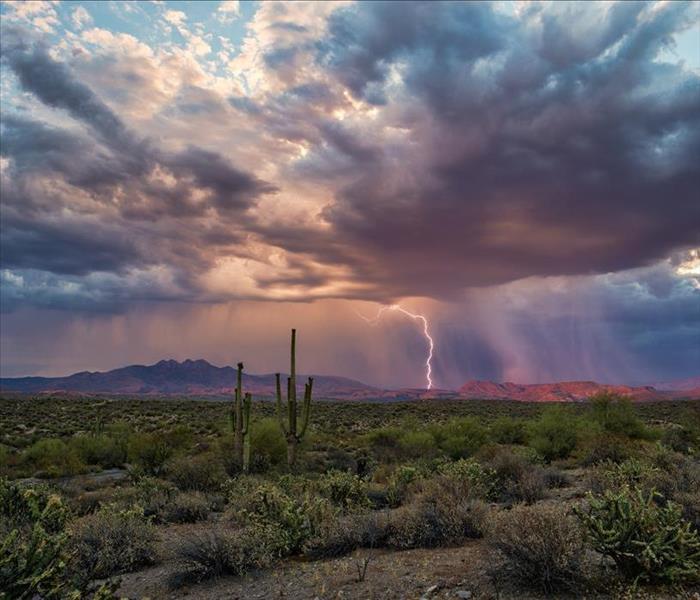 Monsoon
Monsoon
Protect Your Home from Flood Damage
Rain conjures up images of splashy puddles, the pitter-patter of droplets on a windowsill, hot cocoa, and a warm fire. But, there can be too much of a good thing. That same rain can ruin the foundation of your house and cause extensive flood damage. It’s important to take precautions before an expected flood to ensure that minimum loss is sustained. If your home happens to lie in a flood zone, here are some flood preparation tips to consider:
1. Install Sump Pumps
Invest in quality sump pumps. When water reaches a certain level, sump pumps spring into action and drain the water to a designated drainage area. There are two kinds of sump pumps available: battery-operated and the kind that can be plugged into your power source. It’s a smart idea to get both because when an area gets flooded, the power is the first thing to go.
2. Elevate Your Electrical Components
Get a licensed electrician to elevate your electrical components. This will include circuit breakers, switches, sockets, and general wiring. The recommended height is 12” above the projected flood elevation for your home. Not only does this prevent sparks, a short circuit, electric shock, or fire, it also keeps your expensive equipment safe and protected.
3. Waterproof Your Basement
The basement is the first place where water collects if it hasn’t been waterproofed. Make sure you clean all the drains and gutters of leaves and debris. Your property should be on a slope that leads water away. All the windows and openings should be sealed.
4. Have Practice Drills
Just like a fire drill at school, it’s important to have a flood drill at home. Make a checklist of the things that need to be checked and done when a flood hits. This checklist should be in a place with ease of access and high visibility, like on the fridge. Everyone in the house should know the list inside out.
Some important things to include on the list would be:
- Turn off and unplug all electrical appliances.
- Turn the electricity off from the main source.
- Turn the gas off from the main source.
- Turn off the main supply of water. Water pipes can burst from pressure in flood situations and add to the floodwater.
5. Make Sure You Have Backflow Valves for all Sewage Connections
All appliances and installations with a connection to the main sewage line, like sinks, washing machines, and toilets, should be installed with a backflow valve. The pressure of the floodwater can cause sewage lines to overflow. Without a backflow valve, this water is going to find an outlet in your home through these installations. Floodwater can be nasty enough to clean without adding sewage to it.
6. Install Septic Pump Alarms
This alarm lets you know when the septic tank is in danger of overflowing. If the tank is flooded, do not flush the toilet before you’ve had an expert take a look at it. Putting additional pressure on a tank that is already flooded may cause the tank to overflow into your home.
7. Secure Fuel Tanks
Any fuel container outside of the house should either be brought in and secured or tied and secured to something outside. If not properly anchored, these tanks could float downstream and damage a neighbor’s property, contaminate a food source, or even catch fire.
8. Have a Supply of Drinking Water
It may seem like there’s an endless supply of water everywhere, but don’t drink water from your well or the city water supply until the water has been tested and declared safe. Have a backup supply of bottled water or invest in a filtration system for your home. You should also have an emergency supply of food and a fully stocked first aid box.
9. Create a Makeshift Toilet System
Septic tanks are most likely to be unusable in a flood situation. It’s important to have a back-up system in case this happens. A Porta Potty can be used in this situation. A second option is to turn off the valve to the toilet tank, line it with sanitation liners or trash bags, and use the toilet as usual. Tie the bags with secure ties, and double or triple bag them to keep flies and smells to a minimum.
10. Move Valuables to Upper Floors
Any valuable and fragile goods that are most likely to sustain irreparable damage from floodwater should be transported to the upper floors of the house. If your house floods, these items will likely be safe from the water.
11. Use Sandbags and Plastic Sheets
Sandbags can soak up water quickly, and plastic sheets can ensure that water doesn’t seep into the foundation of the house. In a pinch, both can deliver quick results. Use sandbags to block water from seeping under the doors.
Flood damage in the monsoon season is a sad reality that millions of people face every year. Despite the best precautions, there is no guarantee against flood damage and water damage. Call SERVPRO of Cedar City/Fillmore, and we’ll take care of any water or flood damage your house sustains. Contact us today, so you can make the best of the rainy season.
What You Need to Know to Prevent Water Damage to Your Home
2/18/2021 (Permalink)
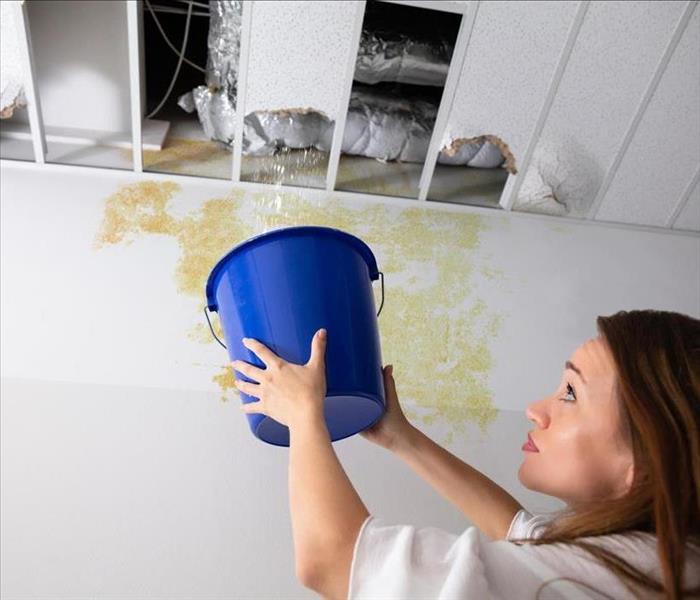 Water leak
Water leak
Flooding can happen in a matter of minutes but can cause extensive (and expensive!) damage to your home. Although it’s nearly impossible to totally flood-proof your house, covering the basics outlined below can help shield you from potential flood damage in the future.
Look Out for Water Leaks
Water leaks are one of the top causes of water damage to homes. Water leaks from toilets or other plumbing can cause significant damage over time that can be expensive to repair. If you notice any leaks or a constantly running toilet, call a professional and get it addressed immediately. In addition, keep an eye on your monthly water bill, as any unusual spikes can indicate a leak somewhere in your home’s plumbing system.
Clogged drains can also back up and cause water to show up where it shouldn’t be. As an easy precaution, pour boiling water down the drains in your home’s kitchen and bathrooms around once a month to help clear out any stubborn debris. Remember that animal fats and cooking grease should never go down drains.
Home appliances like dishwashers, washing machines, ice makers, and more can utilize massive amounts of water, meaning any leak that develops can quickly become a huge headache. Check the hoses to these appliances once a year and replace them every 5-7 years, or right away if you spot any issues.
An air conditioning unit can be especially prone to leaks, and water from a malfunctioning unit can be dangerous for basements, as they can soak the ceiling and cause mold damage. If you ever spot discoloration that you suspect may be due to mold, call a mold remediation specialist as soon as possible, as mold may cause health effects to you and your family.
Keep Your Gutters Clear
Keeping your home’s gutters clear and free of debris is an easy yet often overlooked chore. Regularly clearing the leaves, twigs, pine needles, and other gunk from your house’s gutters and downspouts keeps water from pooling up. This avoids water damaging roof coverings, rotting wood, peeling paint, and leaking into basements.
If you have a front and back yard, ensure that your lawn “points” away from your home. Lawns can have imperceptible grades, and even the slightest slope down away from your house can act as an extension to your gutters and carry water away from the walls of your home.
Ensure Your Home’s Foundation Is Strong
Cracks can develop occasionally in the concrete foundation of your home, and if not treated, they can widen with time to let water in and render you extra vulnerable to storms. Do regular foundation check-ups where you walk around the outside of your house and make note of any cracks, which can be filled with masonry caulk and/or mortar as soon as they’re spotted. If cracks continue to develop frequently after repairs, consult with professionals.
Another way to catch any foundational issues as soon as possible is to watch for any water seeping into your basement after a heavy rain, which is indicative of a structural problem somewhere.
Locally-owned and operated, SERVPRO of Cedar City/Fillmore has a team of highly-qualified water restoration technicians ready to get your home back in pristine condition. For more information on how to prevent water damage to your home or for 24/7 emergency response in Fillmore and Cedar City, Utah, contact us at SERVPRO today.
Restoration Professionals and Preferred Vendor Qualifications
2/27/2020 (Permalink)
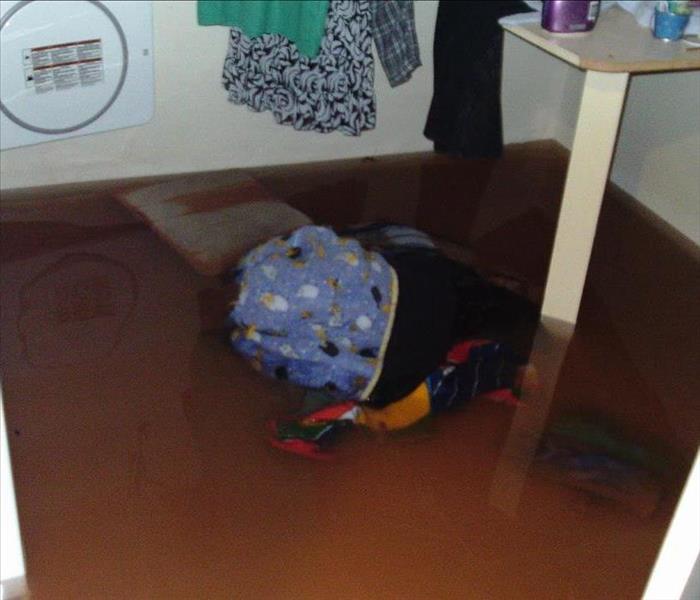 Laundry room flooded in Cedar City, UT home.
Laundry room flooded in Cedar City, UT home.
When it comes to the professionals who provide restoration services, you want to know how well they will do their jobs. Without information about the cleanup and repair company, how could you possibly tell whether you'll get good results? The good news is that your insurance agent can refer you to a preferred vendor who has met specific qualifications.
All Restoration Companies Are Not the Same
Naturally, some restoration companies require that their employees hold more qualifications than others. For example, SERVPRO professionals must abide by 21 guidelines. This focus on meeting the highest industry standards makes the company popular with many insurance companies. As a result, you can expect good results from SERVPRO in the following areas:
- Customer care
- Compliance checks
- Crew and vehicle safety
- Insurance compliance
- Accurate documentation
- Quality assurance
Ongoing training is an important part of participation in the company's vendor program. Although there are many franchises around the country, including Cedar City, UT, you can be confident of a consistent level of quality service because of the company's high standards.
Why Qualifications Matter
Employers in most industries hire applicants who have valuable qualifications. Certifications, licensing, and other credentials show the applicants' ability to do great work and provide great results. In the cleaning, restoration, and mitigation industry, qualifications tend to show a combination of experience and education. This is one of the main reasons your insurance agent will only recommend a restoration company with high standards and professionalism. Naturally, your insurance provider is motivated to work with partners who offer good results while keeping costs low.
Why Choose a Preferred Vendor?
When your home has been damaged by water, fire, or anything else, you naturally want to work with a company that is going to do the restoration work well. Your insurance agent is likely to provide you with a referral to a cleanup and restoration company that maintains high standards and exhibits compliance with industry regulations. Choosing to work with a preferred vendor increases the chances that repair work will be done well and makes it more likely that the insurance company will cover the costs of restoration.
Tips To Quiet Your Pipes
10/31/2019 (Permalink)
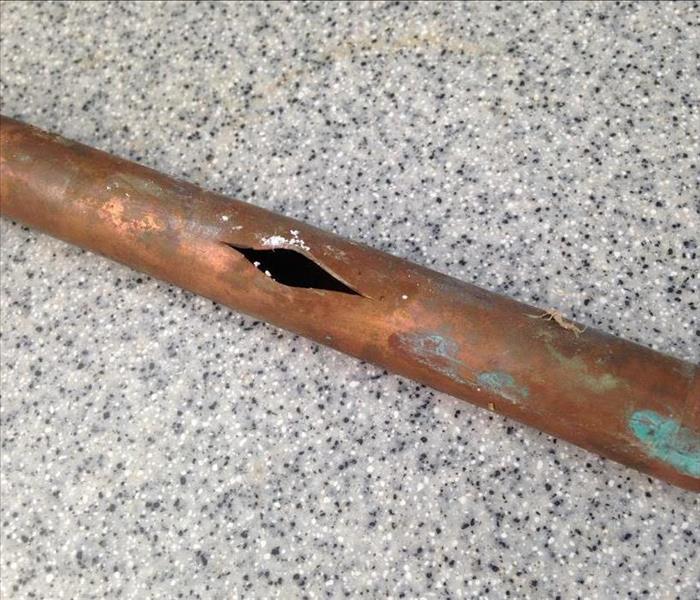 Broken pipes can lead to severe water damage in your home in Cedar City, UT.
Broken pipes can lead to severe water damage in your home in Cedar City, UT.
You hear whistling and hammering at your home in Cedar City, UT. You peek in on your family and it is not any of them. Who could it be? Surprisingly, it could be your pipes. Ignoring these sounds could lead to a disastrous pipe break in the future. Read below to learn what these sounds mean and what to do next.
Is your Cedar City home making sounds?
Hammering
Hammering or banging sounds occur when water slams into the sides of the pipe when the flow is suddenly shut off. Before a pipe break occurs, solve this by taking the following measures:
• Examine your pipes to see if any pipes are banging against something or missing pipe straps. If this is the case, fix the broken pipe by adding replacement pipe straps or inserting padding where the banging occurs.
• Install an air chamber when the pipe does not contain water. The resulting pocket of air softens the blow of the water slamming abruptly, and lessens the hammering noise. Depending on the location and severity of the noise, these chambers can be installed behind faucets or on the main water line to the house.
Whistling
Whistling noises happen when water quickly flows through a small opening, usually related to faucets or toilet tanks. To avoid a potential pipe burst, take the appropriate next steps:
• First, isolate the problem by turning on and closely listening to each faucet and toilet individually until you locate the source.
• For faucets, turn off the water supply and tighten or replace the interior washer and screw. For toilets, repair, adjust or replace the ballcock mechanism inside the tank.
Be vigilant about the sounds your pipes make in Cedar City, UT. If you do not take action to fix the problem, a pipe break may occur. Once a pipe burst happens in your home, the likelihood of water damage to your home and belongings is substantial. In this event, fix the broken pipe, call your insurance agent and contact a water restoration specialist as soon as possible.
Can a Bad Water Heater Threaten Your Home
9/27/2019 (Permalink)
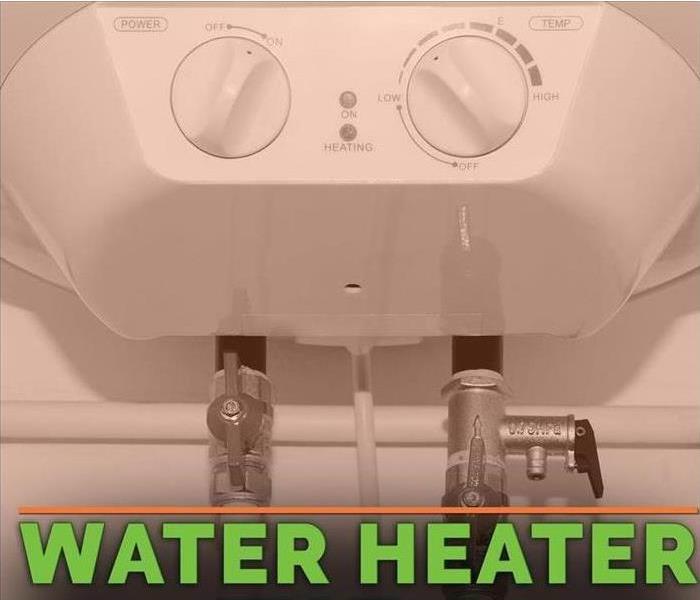 It's important to pay attention to warning signs of a broken water heater in Cedar City, UT.
It's important to pay attention to warning signs of a broken water heater in Cedar City, UT.
Tucked away in a closet or perhaps living out in the garage, the water heater is one appliance many take for granted. That first cold shower after a failure is often what reminds people what a luxury hot running water truly is, but discomfort during bathing is just a minor risk. It’s important to notice any evidence of a leaking water heater, as this can quickly become a broken water heater, a problem capable of causing major damage to your home.
Warning Signs of a Broken Water Heater
Warning Signs To Watch For
There are numerous red flags that may arise to warn you about a leaking water heater, both inside the home and near the unit itself. These include but are not necessarily limited to:
• Banging or rattling noises when running hot water caused by sediment deposits in the tank
• Rusted or corroded connections extending from the heater
• Clouded or bad-smelling heated water
• Visible signs of water near the tank
Often, homes in Cedar City, UT continue to rely on heaters that are over 10 years old. This is the approximate time frame wherein these appliances frequently begin to fail, so pay extra attention if your home is running an older unit.
What To Do When Problems Occur
The first step is to confirm that a leaking water heater is actually the root of your trouble. Ensure that pipe problems aren’t the origin, and rule out any other possibilities before proceeding. If the heater’s the culprit, terminate its power source (electric or gas) if you can do so safely. The water supply should come next, at which time you can begin necessary repairs or replacement. If a failed water heater has already created any type of flooding, make sure to counteract the effects as soon as possible. Restoration professionals can help remove floodwater and advise you on how to prevent any further damage that may result from excess moisture or humidity in the home.
Emergency Tips for Damage From Contaminated Water
6/28/2019 (Permalink)
When you find that your house has been flooded it is common to feel alarmed, frustrated, devastated, or worried to some extent. Not knowing what has been damaged or how much the repairs will cost can be stressful. However there are things that you can do to minimize the damage to your home and to ensure the safety of you and your family. Here are a few quick tips that can be quite helpful when your home has been flooded by water from a contaminated source.
- Avoid all contact with sewage and items contaminated by sewage.
- Wash your hands thoroughly after contact with contaminated items.
- Don’t spread contaminated water by walking unnecessarily on damaged or affected areas.
- Don’t turn on the heating ventilation and air conditioning (HVAC) system if there is a possibility of spreading contaminated air.
- Don’t use household fans to dry the structure they will spread the contaminants even worse.
- Don’t use products for personal hygiene and cleanliness if they have been exposed to the contaminants
These tips will help you avoid some dangerous situations and allow you to save money by decreasing the amount of damage that could potentially happen to your home and of course the first and best tip is always to Call SERVPRO of Cedar City/Fillmore at 435-251-9241.



 24/7 Emergency Service
24/7 Emergency Service










